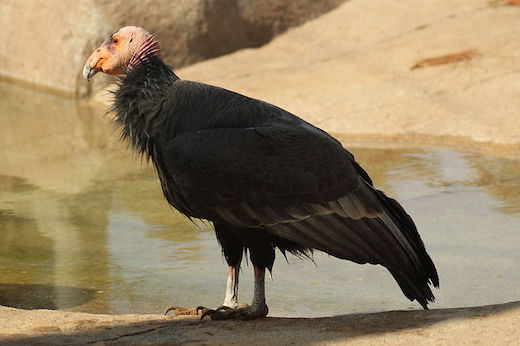Californian Condor

Critically endangered
Otherwise known as a new world vulture, the California Condor was the largest of the North American land birds until it was made extinct in the wilds in 1987. Since then the bird has been re-introduced into certain parts of the world. Its striking plumage is a deep black, with only small white patches on the underside of both wings. Typically, the head is completely bald and its skin color can change from a light pale to a deep orange in the most prime of adults.
With a staggering wingspan just under 10ft, it has the large span of any bird in North America. Add in the fact they weigh around 12kg on average, and you’ve got the heaviest bird as well! These birds tend to be one of the longest living, as well. They have a lifespan of roughly 60 years – although this was obviously tempered by humans slaughtering them at one stage.
Population Distribution
Typically, the California condor is found today in southern Utah, specifically around about the Grand Canyon, as well as northern Arizona. Of course, as you might expect, you can find the California condor in California itself, if you heard towards the mountainous regions towards the coast. Lastly, the most common place to find these creatures would be to head to the Baja California where they are fairly populous.
However, the Condor has gone through some tough times in its life. The majority of their population suffered throughout the 21st Century as their habitats were destroyed, they were poisoned by lead or they were killed by poachers. In 1987, just 22 of these creatures remained and whey were brought in under US protection by the US Government. This has since helped the creatures to start breeding again, although there are roughly 425 of the creatures left. Given that they were just about wiped out, it’s not such a low number!
Threats
As a popular symbol to many Native Americans, the California Condor has long been a part of their storytelling culture. However, they have also come under significant threat due to the expansion of the United States. This led to many of the creatures being killed, especially by poachers. It’s also speculated that their significant culling was also significantly part of Native American cultures using their bodies as parts of ceremonial clothing.
In an article produced in The Ecologist in January 2015, it was pointed out that more than 60% of adult and baby Condor deaths were at the hands of lead poisoning, specifically coming from old ammunition.